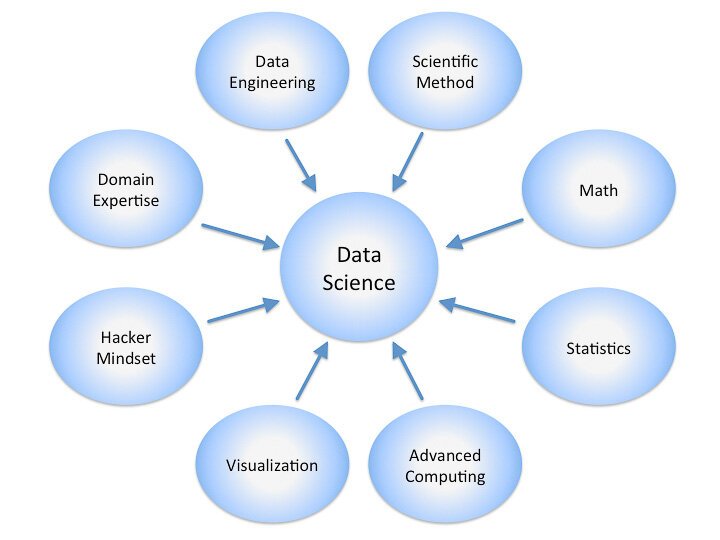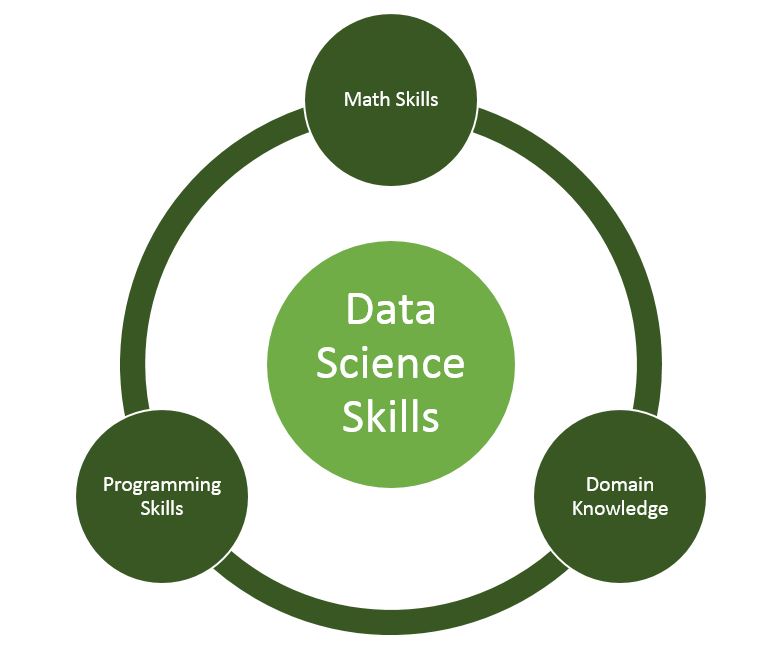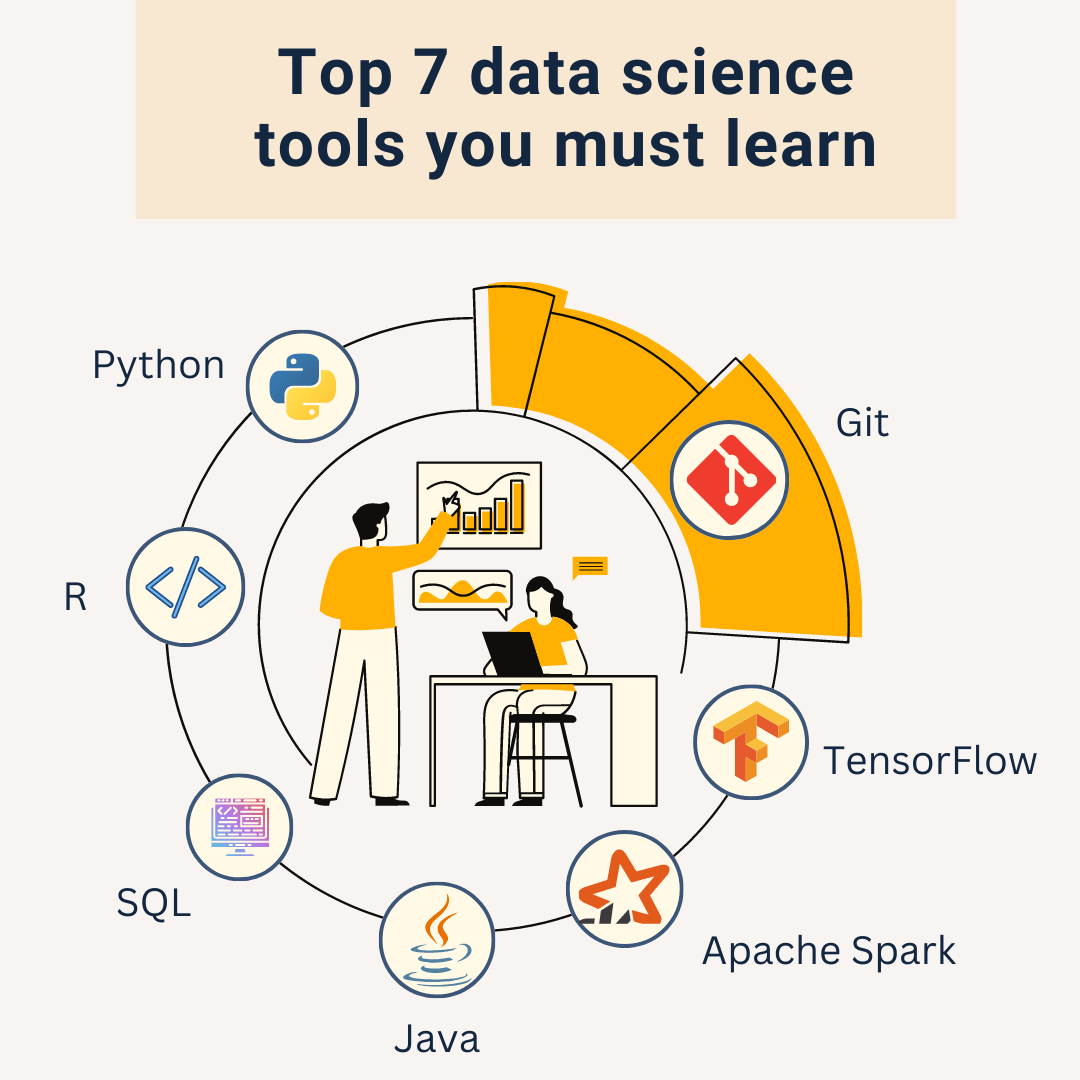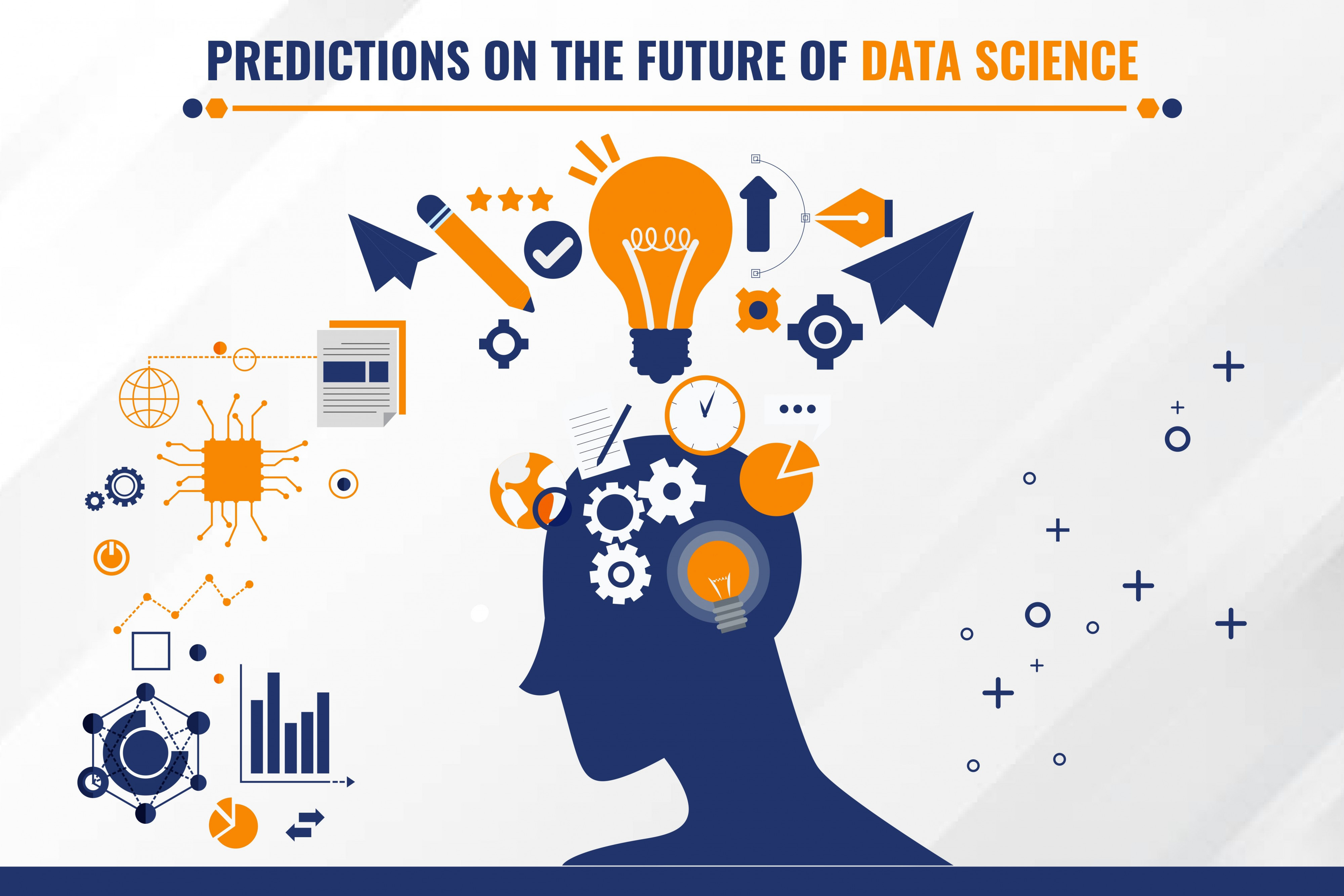What is Data Science?
Data science is an interdisciplinary field that combines statistical analysis, machine learning, data visualization, and domain expertise to analyze large and complex datasets. It involves collecting, processing, and analyzing data to uncover patterns, trends, and insights that can be used to make informed decisions.
The core components of data science include:
- Data Collection: Gathering raw data from various sources such as databases, social media, sensors, and online transactions.
- Data Cleaning: Removing inconsistencies, missing values, and errors to ensure data quality.
- Exploratory Data Analysis (EDA): Understanding the data through visualization and statistical methods to identify trends and anomalies.
- Machine Learning: Applying algorithms to build predictive models and automate decision-making processes.
- Interpretation and Communication: Presenting insights through reports, dashboards, and visualizations to inform stakeholders.
Data science bridges the gap between raw data and actionable insights, making it an essential tool for businesses and organizations looking to gain a competitive advantage.
The Importance of Data Science
Data science is crucial because it helps organizations leverage data to:
- Make Data-Driven Decisions: Instead of relying on intuition, organizations can use data analytics to make informed and strategic choices.
- Improve Efficiency and Performance: Businesses can optimize their operations by identifying inefficiencies and streamlining processes using data-driven insights.
- Enhance Customer Experiences: Personalization and targeted marketing campaigns are made possible by analyzing customer data and preferences.
- Detect Fraud and Security Threats: Financial institutions and cybersecurity firms use data science to detect anomalies and prevent fraudulent activities.
- Drive Innovation: Insights from data can lead to new product development, better service offerings, and technological advancements.
Industries ranging from healthcare and finance to retail and logistics are leveraging data science to stay ahead in the competitive landscape.
Applications of Data Science
Data science has a broad range of applications across different sectors. Some of the most impactful applications include:
1. Healthcare
Data science is revolutionizing healthcare by enabling predictive analytics, personalized treatment plans, and early disease detection. Machine learning algorithms analyze medical records to identify risk factors and recommend preventive measures. Additionally, wearable devices generate vast amounts of health data that can be used for real-time monitoring and diagnosis.
2. Finance
In the financial sector, data science is used for credit scoring, fraud detection, risk management, and algorithmic trading. Banks and financial institutions analyze customer spending patterns to offer personalized financial advice and detect suspicious transactions in real time.
3. Retail and E-commerce
Retailers leverage data science to optimize inventory management, predict demand, and personalize marketing campaigns. Recommendation systems powered by machine learning analyze customer purchase history to suggest relevant products, improving customer satisfaction and increasing sales.
4. Marketing and Advertising
Marketing professionals use data science to analyze customer behavior, segment audiences, and optimize advertising campaigns. Sentiment analysis on social media platforms helps brands understand public perception and tailor their messaging accordingly.
5. Transportation and Logistics
Data science plays a critical role in route optimization, demand forecasting, and fleet management. Companies like Uber and FedEx use predictive analytics to improve delivery times, reduce costs, and enhance customer experiences.
6. Sports Analytics
Sports teams analyze player performance, injury risks, and game strategies using data science. This allows coaches to make data-driven decisions that improve team performance and optimize training programs.
7. Energy and Utilities
Energy companies utilize data science to predict energy consumption, optimize resource allocation, and develop smart grids. Advanced analytics help in detecting faults and improving efficiency in power generation and distribution.
Tools and Technologies in Data Science
A variety of tools and technologies support data science workflows. Some of the most popular ones include:
- Programming Languages: Python and R are widely used due to their rich libraries for data manipulation, analysis, and machine learning.
- Data Visualization Tools: Tableau, Power BI, and Matplotlib help create interactive charts and dashboards to present findings effectively.
- Machine Learning Frameworks: TensorFlow, Scikit-learn, and PyTorch facilitate the development of predictive models.
- Big Data Technologies: Hadoop, Spark, and Apache Kafka handle large-scale data processing and real-time analytics.
- Databases: SQL, MongoDB, and PostgreSQL are used for data storage and retrieval.
- Cloud Platforms: AWS, Google Cloud, and Microsoft Azure offer scalable solutions for data storage, processing, and model deployment.
Choosing the right tools depends on the specific needs of a project and the scale of data being processed.
The Data Science Process
The data science workflow typically follows these key steps:
- Problem Definition: Clearly understanding the business problem and defining the objectives of the analysis.
- Data Acquisition: Collecting relevant data from different sources such as databases, APIs, and web scraping.
- Data Cleaning and Preprocessing: Preparing the data by handling missing values, outliers, and formatting inconsistencies.
- Exploratory Data Analysis (EDA): Analyzing patterns, correlations, and distributions within the data using visualization techniques.
- Model Building: Applying machine learning algorithms to build predictive models based on historical data.
- Model Evaluation: Testing the model’s performance using metrics such as accuracy, precision, recall, and F1-score.
- Deployment: Integrating the model into business applications and monitoring its performance over time.
- Maintenance and Improvement: Continuously updating the model with new data and refining its accuracy.
Each step in the process is crucial to ensure that the insights generated are accurate, reliable, and actionable.
Challenges in Data Science
Despite its immense potential, data science faces several challenges, including:
- Data Quality: Inconsistent, incomplete, or biased data can lead to inaccurate insights and unreliable models.
- Data Privacy and Security: Ensuring data protection and compliance with regulations such as GDPR and HIPAA is crucial.
- Interpretability: Complex machine learning models often lack transparency, making it difficult to understand their decision-making process.
- Scalability: Handling large datasets efficiently requires robust infrastructure and computing power.
- Skill Gap: There is a high demand for skilled data scientists who possess expertise in programming, statistics, and domain knowledge.
Organizations need to address these challenges to fully capitalize on the benefits of data science.
The Future of Data Science
The future of data science is bright, with continuous advancements in AI, machine learning, and automation. Some key trends shaping the future of data science include:
- Automated Machine Learning (AutoML): Simplifying the process of building and deploying machine learning models with minimal human intervention.
- Explainable AI: Improving transparency and interpretability of AI models to build trust and accountability.
- Edge Computing: Processing data closer to the source, reducing latency and improving real-time analytics.
- Integration with Blockchain: Ensuring data integrity and security through decentralized data storage.
- Augmented Analytics: Leveraging AI to enhance data analysis and decision-making capabilities.
As data science continues to evolve, it will play an even more significant role in shaping the future of businesses and society.


You must be logged in to post a comment.